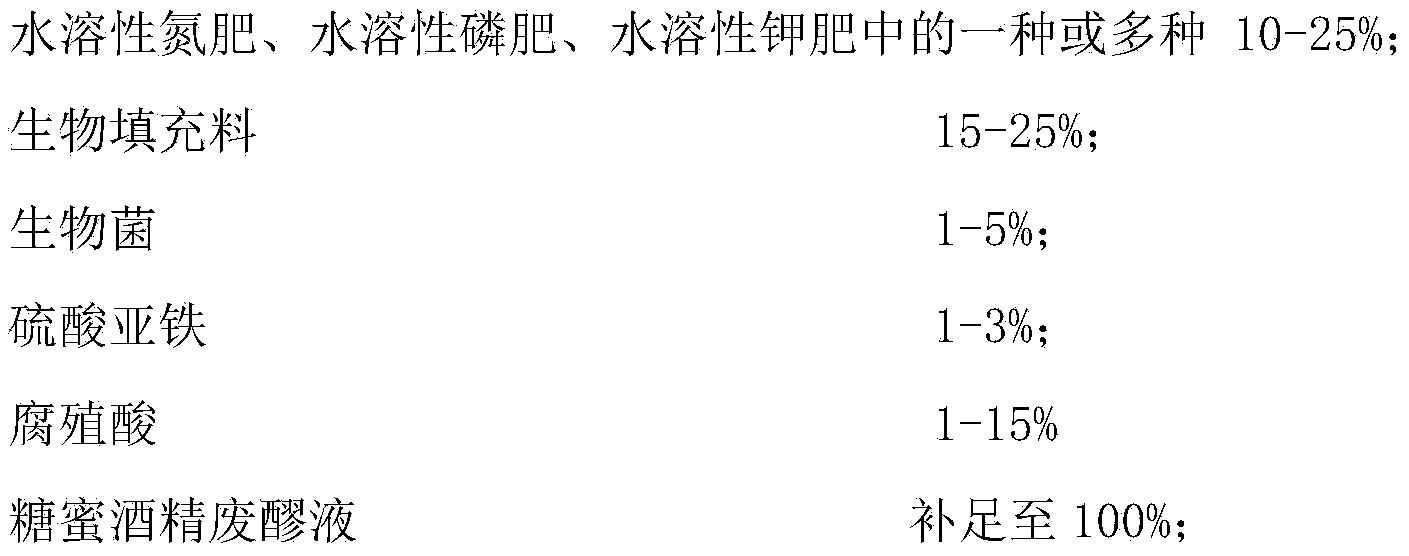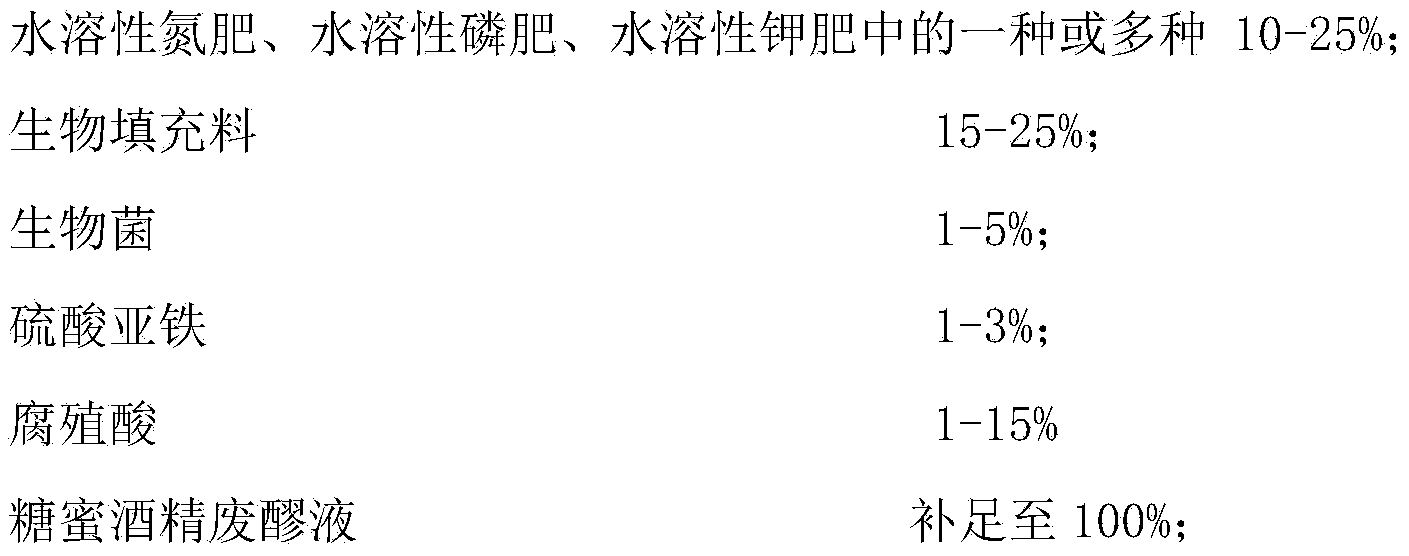Special bio-organic fertilizer for lotus root planting
A bio-organic fertilizer and bio-technology, applied in the field of compound fertilizer, can solve the problem of drug resistance and drug resistance of pathogenic bacteria, and does not raise the problems of lotus root rot and the resurgence of rot, so as to increase the quality of lotus root and reduce rot The probability of occurrence and the effect of saving delivery volume
- Summary
- Abstract
- Description
- Claims
- Application Information
AI Technical Summary
Problems solved by technology
Method used
Image
Examples
Embodiment 1
[0029] Prepare 1000 kilograms of water-soluble organic-inorganic compound fertilizers that utilize molasses alcohol waste mash to make, get 50 kilograms of ammonium dihydrogen phosphate, 50 kilograms of ammonium chloride, 50 kilograms of potassium sulfate, 250 kilograms of 80 order tilapia offal powder, sulfurous acid 20 kg of iron, 2.5 kg of spores, 2.5 kg of spores, 2 kg of EM bacteria, 2.5 kg of production-increasing bacteria, 5 kg of enzyme bacteria, 5 kg of fermenting bacteria, 10 kg of antibacterial bacteria, 10 kg of humic acid, containing 65% concentration of organic matter 550 kg of molasses alcohol waste mash, the above-mentioned tilapia viscera powder, biological bacteria, molasses alcohol waste mash, and ferrous sulfate were placed in an anaerobic fermentation tank in sequence, stirred evenly and fermented at room temperature for 16 hours, and then extinguished at high temperature. Live, precipitate and filter out impurities, add ammonium dihydrogen phosphate, ammon...
Embodiment 2
[0031] Prepare 1000 kilograms of water-soluble organic-inorganic compound fertilizers utilizing molasses alcohol waste mash to make, get 100 kilograms of ammonium sulfate, and order number is 100 kilograms of tilapia skin powder of 1600 order, 50 kilograms of chicken manures, 100 kilograms of wood bran, sulfurous acid 30 kg of iron, 5 kg of spores, 5 kg of spores, 5 kg of EM bacteria, 5 kg of production-increasing bacteria, 5 kg of enzyme bacteria, 5 kg of fermenting bacteria, 20 kg of antibacterial bacteria, 150 kg of humic acid, containing 65% concentration of organic matter 420 kg of molasses alcohol waste mash. Put the above-mentioned tilapia skin powder, chicken manure, biological bacteria, molasses alcohol waste mash, and ferrous sulfate in a fermentation tank, stir evenly, and anaerobically ferment at room temperature for 20 hours, remove the colloids in the fermentation liquid, and extinguish at high temperature. Live, precipitate and filter out insoluble matter, add a...
Embodiment 3
[0033] Prepare 1000 kilograms of water-soluble organic-inorganic compound fertilizers that utilize molasses alcohol waste mash to make, get 100 kilograms of urea, 50 kilograms of potassium dihydrogen phosphate, 50 kilograms of potassium nitrate, 50 kilograms of tilapia bone meal of 800 meshes, wood bran 100 kg, 20 kg of ferrous sulfate, 10 kg of spores, 10 kg of spores, 5 kg of EM bacteria, 5 kg of production-increasing bacteria, 5 kg of enzyme bacteria, 5 kg of fermenting bacteria, 2 kg of antibacterial bacteria, containing 55% organic matter 588 kilograms of molasses alcohol waste mash, after calculating the corresponding dosage of various materials. Put the above-mentioned tilapia bone powder, wood bran, biological bacteria, molasses alcohol waste mash, and ferrous sulfate in a fermentation tank, stir evenly, and ferment at room temperature for 24 hours to remove colloids in the fermentation liquid, inactivate at high temperature, and precipitate Filter out the insoluble ma...
PUM
 Login to View More
Login to View More Abstract
Description
Claims
Application Information
 Login to View More
Login to View More - R&D
- Intellectual Property
- Life Sciences
- Materials
- Tech Scout
- Unparalleled Data Quality
- Higher Quality Content
- 60% Fewer Hallucinations
Browse by: Latest US Patents, China's latest patents, Technical Efficacy Thesaurus, Application Domain, Technology Topic, Popular Technical Reports.
© 2025 PatSnap. All rights reserved.Legal|Privacy policy|Modern Slavery Act Transparency Statement|Sitemap|About US| Contact US: help@patsnap.com


